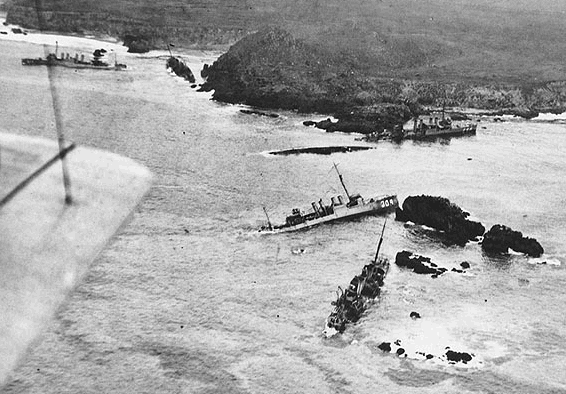JohnRBaker
Mechanical
Not sure if this was technically an 'Engineering Failure' but it certainly was a 'Disaster'.
One hundred years ago today, September 8th, 1923, 14 Clemson-class destroyers, all of which were less than five-years old, were steaming from San Francisco on their way to San Diego. As they approached the Santa Barbara Channel, heavy fog set in but they continued to steam at full speed, operating under what were wartime conditions, and while radio direction finders had been developed and the squadron's flagship was so equipped and it was operating, the information was ignored because it was not considered reliable and therefore the ships were navigating using dead-reckoning techniques. It was a recipe for disaster, and that's exactly what happened.
Most of the destroyers were following in a line, close to each other, again, simulating wartime conditions, when nine of them ran aground off of Honda Point, a place which the early Spaniards referred to as the Devil's Jaw. Seven of the ships were totals loses with two managing to free themselves with only light damage. Five ships made the passage without incident. In all, 23 sailors lost their lives that night. Earlier that evening, a mail ship had also run around on a reef in the channel, but the commander of the squadron had not been notified of that until after their incident occurred. Ironically, one of the Clemson-class destroyers, which had not been damaged, was pressed into service rescuing the crew and passengers from the mail ship, which was a complete loss. Parts of the wreckage of the mail ship can still be seen on the rocks today, as is the case with debris from the seven destroyers which were lost that night.
Here's what it looked like a few days later:

As can be imagined, this also resulted in the largest number of officers ever being court martialed in a single case in US Navy history. In all, 11 officers, the captains of the nine ships that ran aground, the squadron commander and the flagship's navigator, were charged, but in the end, only the commander was found culpable after he took full responsibly for what happened. The other officers were acquitted.
For more information about the Honda Point disaster, go to:
John R. Baker, P.E. (ret)
Irvine, CA
Siemens PLM:
The secret of life is not finding someone to live with
It's finding someone you can't live without
One hundred years ago today, September 8th, 1923, 14 Clemson-class destroyers, all of which were less than five-years old, were steaming from San Francisco on their way to San Diego. As they approached the Santa Barbara Channel, heavy fog set in but they continued to steam at full speed, operating under what were wartime conditions, and while radio direction finders had been developed and the squadron's flagship was so equipped and it was operating, the information was ignored because it was not considered reliable and therefore the ships were navigating using dead-reckoning techniques. It was a recipe for disaster, and that's exactly what happened.
Most of the destroyers were following in a line, close to each other, again, simulating wartime conditions, when nine of them ran aground off of Honda Point, a place which the early Spaniards referred to as the Devil's Jaw. Seven of the ships were totals loses with two managing to free themselves with only light damage. Five ships made the passage without incident. In all, 23 sailors lost their lives that night. Earlier that evening, a mail ship had also run around on a reef in the channel, but the commander of the squadron had not been notified of that until after their incident occurred. Ironically, one of the Clemson-class destroyers, which had not been damaged, was pressed into service rescuing the crew and passengers from the mail ship, which was a complete loss. Parts of the wreckage of the mail ship can still be seen on the rocks today, as is the case with debris from the seven destroyers which were lost that night.
Here's what it looked like a few days later:

As can be imagined, this also resulted in the largest number of officers ever being court martialed in a single case in US Navy history. In all, 11 officers, the captains of the nine ships that ran aground, the squadron commander and the flagship's navigator, were charged, but in the end, only the commander was found culpable after he took full responsibly for what happened. The other officers were acquitted.
For more information about the Honda Point disaster, go to:
John R. Baker, P.E. (ret)
Irvine, CA
Siemens PLM:
The secret of life is not finding someone to live with
It's finding someone you can't live without
